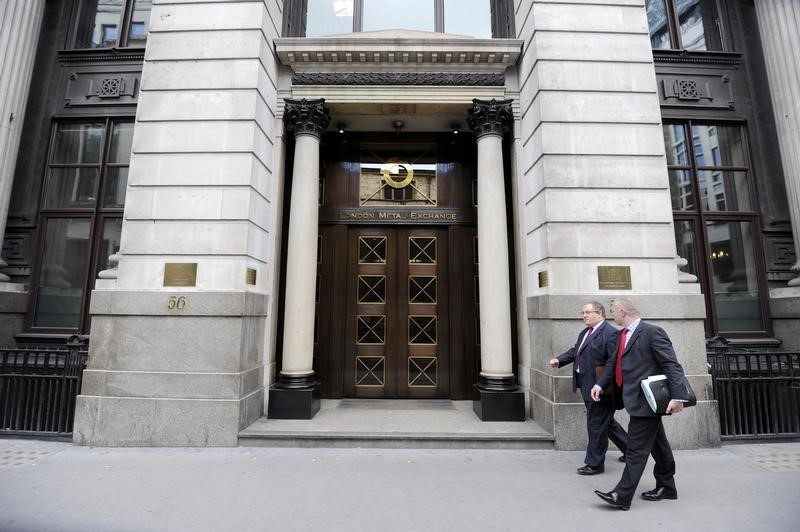* Electronic trading a source of conflict
* LME says it accounts about 60 percent of global copper trading
* LME volumes down 11 pct year-on-year in September
By Pratima Desai
LONDON, Nov 1 (Reuters) - Plans to boost volumes by making it cheaper and easier for funds to trade London Metal Exchange contracts have been shelved to avoid fuelling further conflict with traditional members, sources said.
Volumes have been tumbling since the exchange imposed a hefty 31 percent increase in average trading fees in January 2015, hitting revenues both at the LME and many of its members.
Part of the problem has been low volatility, with narrow ranges for copper and aluminium, the two metals with the highest volumes on the LME. Copper has mostly traded this year between $4,500-$5,000 a tonne and aluminium between $1,500 and $1,700.
Because of that many investment funds have opted for other commodities and financial instruments where volatility has been greater. Slow demand growth in top consumer China has also subdued activity among metal producers and consumers.
The 139-year-old LME has used incentives such as fee discounts to woo funds and encourage liquidity in its prompt, or monthly, dates and three-month contracts on the Select electronic trading system. But sources say the exchange is now reassessing this strategy.
Asked about whether the incentive plans had been shelved, an LME spokeswoman said the exchange was carrying out a review of such programmes.
"The LME is undertaking a review of all its incentive programmes, working with users to ensure that such programmes are optimally structured to enhance the liquidity available on the LME market for the benefit of all LME stakeholders," an LME spokeswoman said in response
The Select system bypasses traditional ring dealing through floor members and undermines their revenue.
This has become a major source of friction the LME tried to counter in August with fee cuts for short-dated carries, or trades between tomorrow and 15 days out. that has not been enough for ring dealers who want the exchange to stop pushing electronic trading because they say it diverts liquidity from the floor where benchmarks used around the world are set.
"It's risking the status of the benchmarks," a senior source at a ring dealing member said.
The LME says it accounts for 60 percent of global copper trading and 71 percent of all base metal trading. Sources say its benchmarks are not at risk and that members are trying to protect their income, much of it derived from floor trading.
"If volumes had been higher, the push on Select may not have been a problem," a metals focused fund manager said. "But there is a problem, look at LME copper volumes compared with COMEX."
Overall, copper volumes on the LME fell nearly 8 percent year-on-year between January-September, while those on COMEX climbed more than 17 percent. Those trends have been in place for most of this year.
Sources say this is partly because trading on COMEX costs less and contracts can be bought, sold and settled on the same day, while LME settlement is generally on the third Wednesday of each month. appeals to Chinese traders and those who want to jump in and out quickly," the fund manager said.
The CME Group (NASDAQ:CME), which owns COMEX, said it was seeing solid demand in Europe and Asia due to it being able to offer 24-hour liquidity.
At 12.6 million lots in September, total LME volumes are down more than 11 percent from the same period a year ago and compare with 16 million lots in January 2015. drop has hit revenue at parent Hong Kong Exchanges & Clearing (HKEx) 0388.HK , where second-quarter net profit slumped 38 percent. London Metal Exchange volumes annual change
http://tmsnrt.rs/1V7pJ7w London Metal Exchange volumes yr/yr change since Jan 2014
http://tmsnrt.rs/2eemsBR
^^^^^^^^^^^^^^^^^^^^^^^^^^^^^^^^^^^^^^^^^^^^^^^^^^^^^^^^^^^> (Editing by Veronica Brown and David Clarke)
